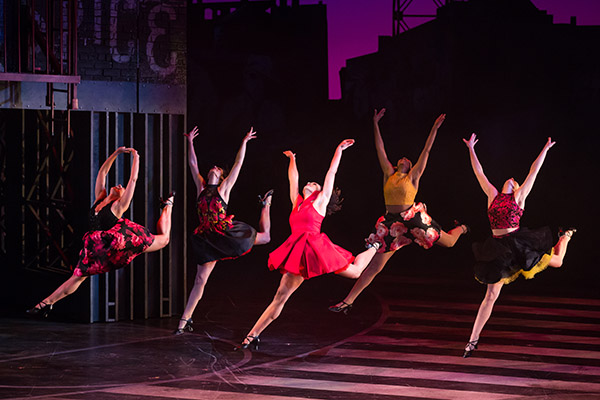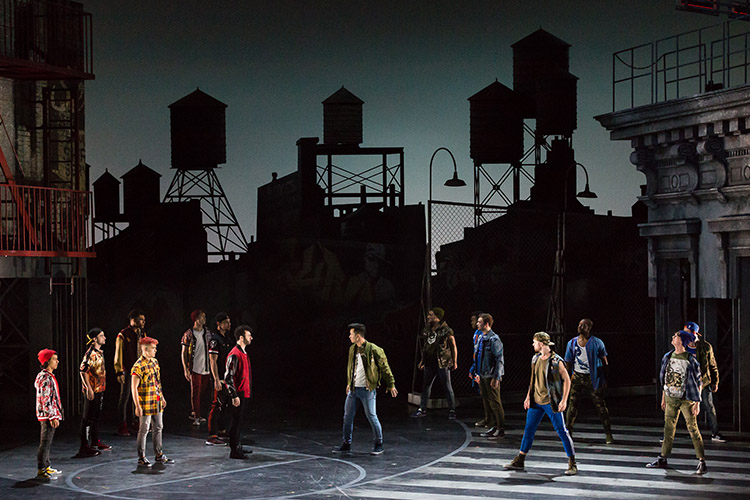March 06, 2019
Hot and Cool: The Creation of WEST SIDE STORY
Unlike other 1950s musicals, West Side Story’s original performers were unknowns, not stars. They were also appearing in an atypically gritty show, colored by both the cruelty and the ecstasy of young people living and loving in a vibrant but dangerous urban setting. And that show had a tragic ending, unprecedented for musical theater. But it abounded with awe-inspiring talent, and everything about it communicated the excitement of the new.
The show’s creative team was formidable: Leonard Bernstein (music), Arthur Laurents (book), and Jerome Robbins (director/choreographer) had all triumphed on Broadway before. Stephen Sondheim (lyrics), then only 25 years old, was working on his first Broadway show, although he was certainly as stupendously gifted as his three colleagues.

The original thought was to refashion Shakespeare’s Romeo and Juliet as a conflict between Jews and Irish Catholics on New York’s Lower East Side. That idea was eventually abandoned, in favor of an “American” gang (the Jets) vs. a Puerto Rican one (the Sharks). Tony/Romeo is a Jet; Maria/Juliet is the sister of Bernardo, leader of the Sharks. In a “rumble,” Riff, the Jets’ leader, is killed by Bernardo, who is killed by the enraged Tony. The ending departs from Shakespeare, which must have stunned 1950s audiences, accustomed in musicals to seeing conflicts happily resolved.
The show boasts five extended dance sequences, beautifully integrated into the drama. Robbins’s dances begin with the young men of the Prologue; with both arms and one leg outstretched as they strut down a New York street, they present one of the most recognizable images from any American musical. The original West Side Story choreography remains enthralling today, whether the Jets, the Sharks, and their girlfriends mambo-ing in an explosion of incendiary sexual electricity in “The Dance at the Gym”; Bernardo’s girlfriend Anita and her cheeky sidekicks in “America”; Riff urging his anxious Jet buddies to stay “Cool,” in the show’s most overtly jazzy number; and the touching ballet that leads into “Somewhere,” midway in Act Two. Bernstein’s universally beloved score is arguably the greatest of his career, including such gems as “Something’s Coming,” “Maria,” “Tonight,” and “I Feel Pretty.”

In New York, where West Side Story premiered on September 26, 1957, the most astute critics thoroughly understood the show – especially The New York Times’s Brooks Atkinson, who called it “an incandescent piece of work that finds off bits of beauty amid the rubbish of the streets… Everything contributes to the total impression of wildness, ecstasy and anguish." Jamie Bernstein, the composer’s daughter, has commented that the issues in the show are “as urgent for us today as they were back then. My father’s music really gives us a language with which to explore these issues and find ways to resolve them.”


